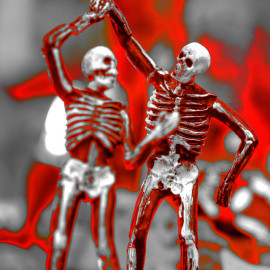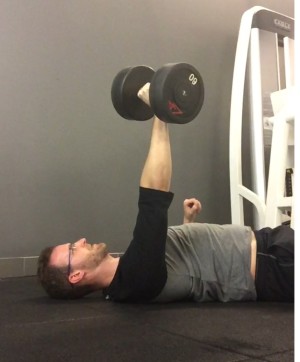An important concept that is under-represented in the popular fitness scene is the movement of the shoulder blades. The movement of your shoulder blades together with your arm is hugely important for safe and effective exercise, so knowing a bit about the basics can do a lot for performance and injury prevention.
Whenever you move your upper arm, your shoulder joint moves. Whenever your shoulder joint moves, your shoulder blades are moving too. That basic set-up is what gives the shoulder such a large range of motion.* If you are exercising – especially lifting weights – you need to have shoulder blades that move well in order to perform at your best and to avoid injury.
Here is a list of some of the basic movements** that your shoulder blades go through:
Retraction – If you pinch your shoulder blades back, towards the spine, this is retraction. It will pull the whole shoulder back.
Protraction – This is when your shoulder blades move out, towards the front of your body. If you give yourself a big bear hug, that will cause protraction. It will move the whole shoulder forward.
Elevation – This is when your shoulder blades move up, towards your ears. Shrugging is elevation. It will move your shoulder up towards your ear.
Depression – The opposite of shrugging. Pulling your shoulders down towards your back pocket is depression. It will move your whole shoulder down.
Upward and Downward Rotation – The shoulder blades rotate both clockwise and counter-clockwise. When you make snow angels, both movements happen.
Scapulohumeral Rhthym – This refers specifically to the the movement that allows the shoulder to move from arms down at your sides to all the way over head. As your arm goes up, your shoulder blades go through some specific movements, relocating the socket and giving you that overhead reach. It is like a dance between your bones in which the right pattern with the right timing has to happen. Without it, things get ugly.
HOW IT ALL MATTERS
For many of us, the movement of our shoulder blades is either a little off or sometimes barely happening at all. Stiffness in muscles from poor posture and overuse, as well as tension, ingrained bad habits, and simply being unaware can get in the way of good movement and without it, we are much more susceptible to injury and are just plain weaker than we could be. This is all very unfortunate for our workouts!
Step one is to figure out where you’re at. An assessment of your shoulder and scapular mobility with a good personal trainer or a physical therapist can help with that. The second thing is to learn about how you should be moving when doing your favorite exercises. (example) Finally, if dysfunction is there, you’ll need a strategy to fix it. Massage, foam rolling, stretching, movement drills, and lots of practice are the ingredients here. None of this is necessarily easy, but on the other hand, it’s not that hard either. The trick is to get help when you need it and then to be diligent about working on it. In the end, I promise, you will be in way better shape than you ever would have been otherwise and you may even see some pains that you thought were here forever disappear for good!
RELATED:
Rhythm Required: Developing Scapulohumeral Rhythm for a Big Bench and Shoulder Health
* The shoulder is a ball and socket joint. The ball of the joint is at the end of the humerus, which is the bone of your upper arm and the socket is located on the shoulder blade. This arrangement means that the whole joint itself can literally float around a bit in your body. If you pull your shoulder blades together (retraction) the whole joint moves back a bit. If you give yourself a bear hug and move the shoulder blades out to the sides of your body (protraction) the whole joint moves forward a bit. The hip, in contrast, is much more fixed to its location. It does not have much ability to shift forward, back, or up and down. This makes it a much more stable joint.
** There are some other movements not mentioned here but these are the main ones that I talk to clients about. The important part is merely to understand that the movement of your arm causes shoulder blade movement and it’s very important that it go well.
PHOTO: Kevin Dooley, Skeleton dance to celebrate 5 million views!



Pingback: Shoulder Pain: Two Things To Know - do the movement February 8, 2016
[…] Retraction, Protraction, Elevation, Depression, and Scapulohumeral Rhythm […]
Pingback: The Sternoclavicular Joint - do the movement February 25, 2016
[…] Retraction, Protraction, Elevation, Depression, and Scapulohumeral Rhythm […]